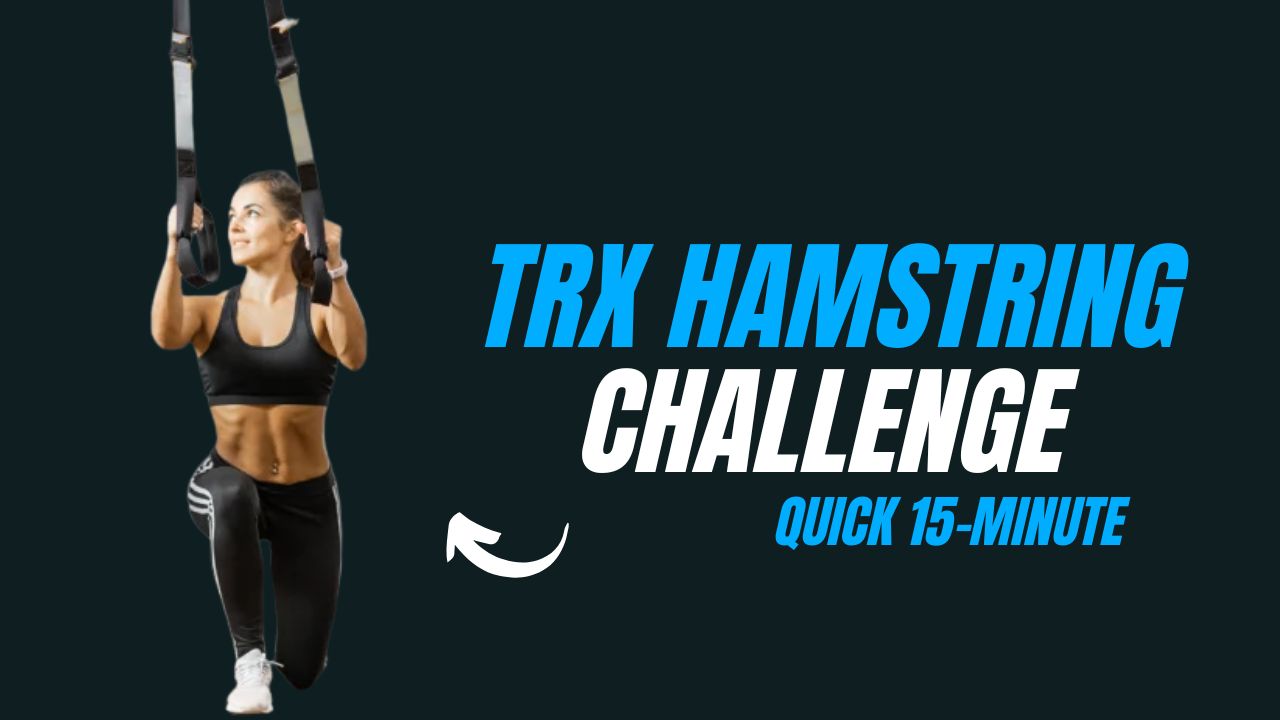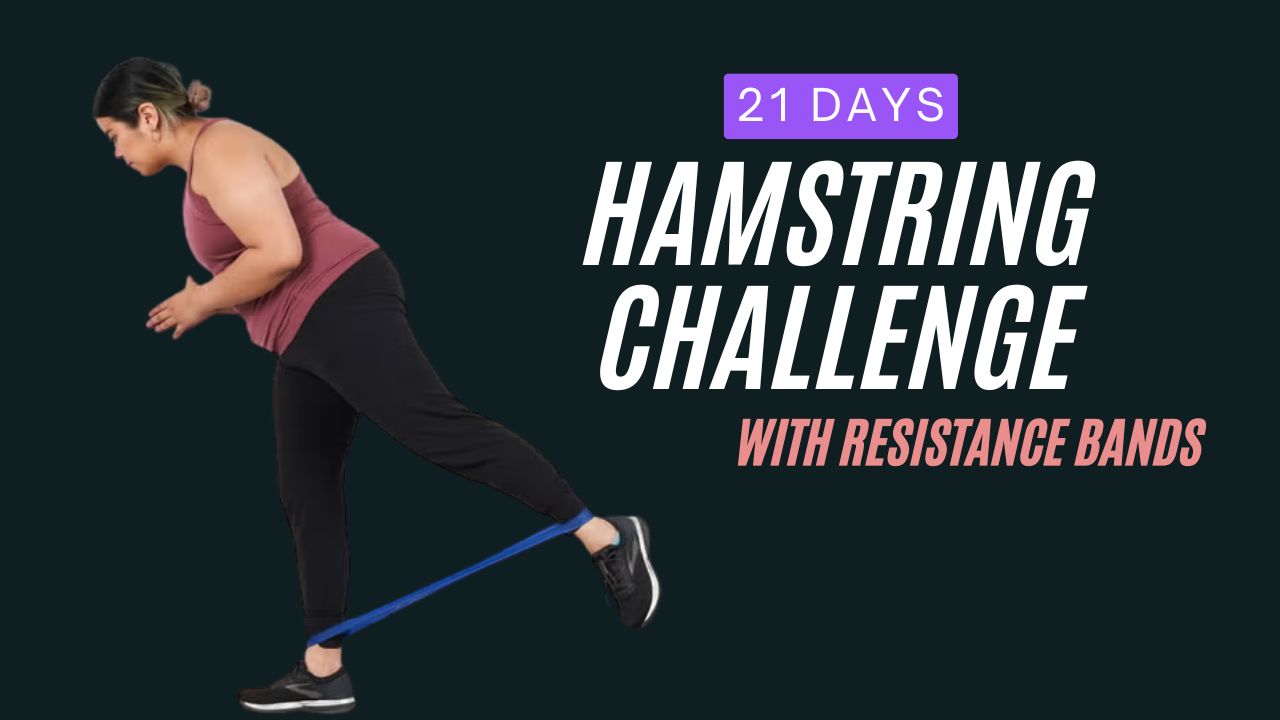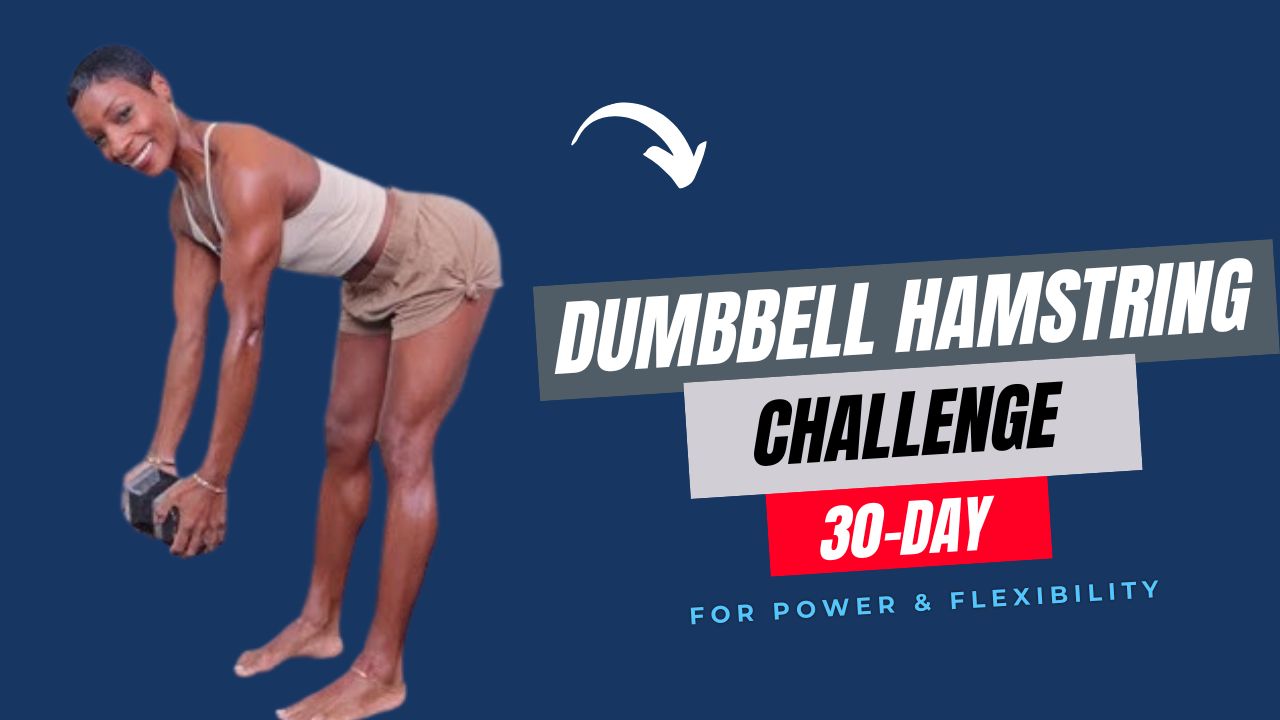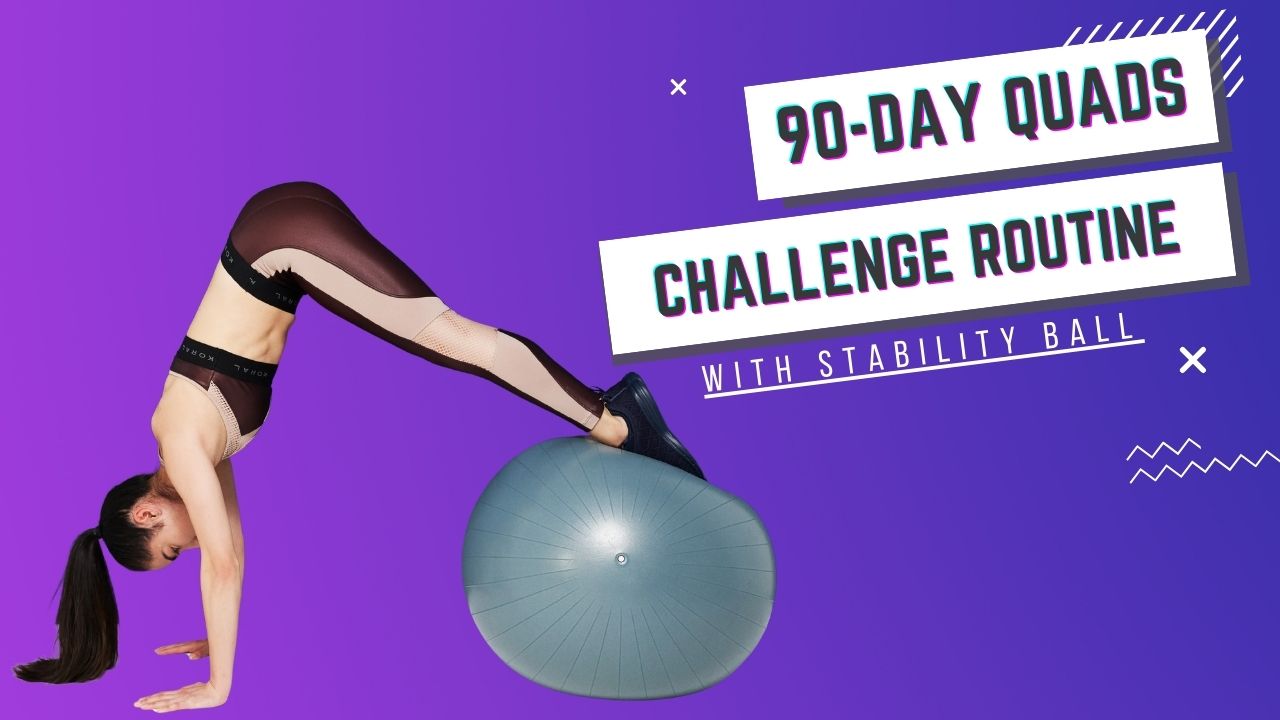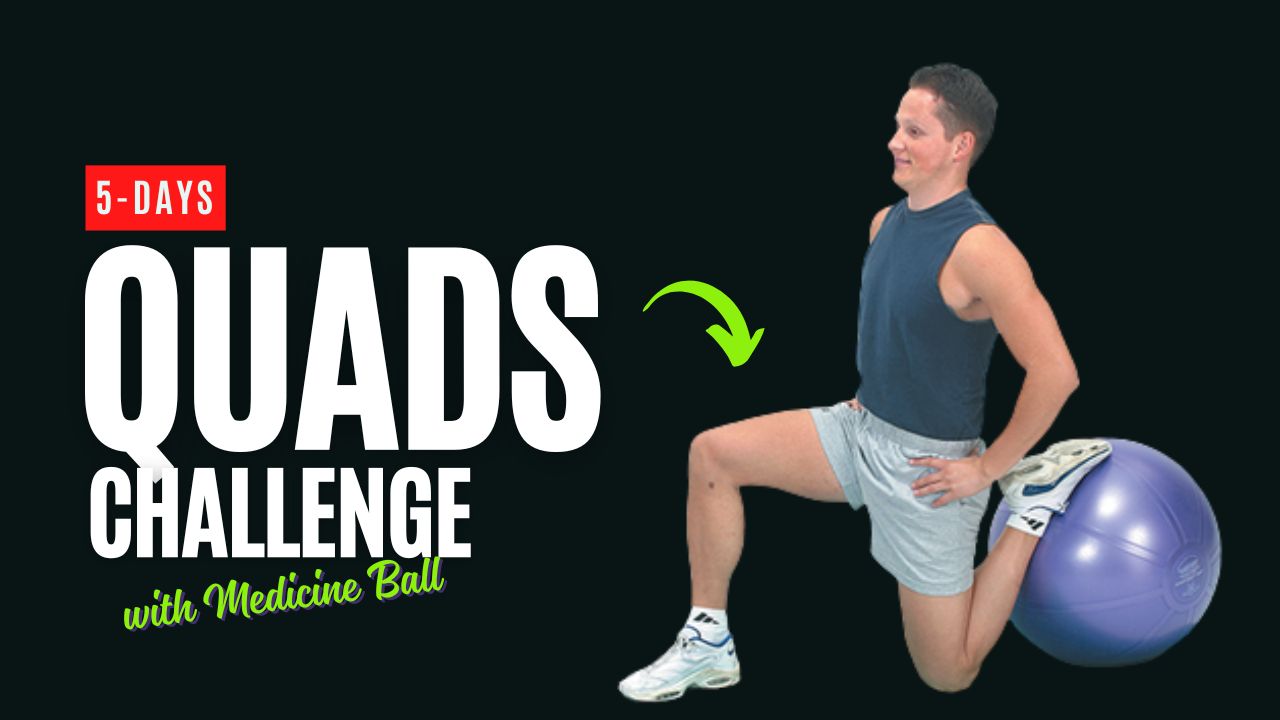Are you tired of endless squats and lunges with minimal results? Do you want lean, strong, and toned legs without spending hours in the gym?
Resistance bands might just be the secret weapon your leg workouts are missing. Not only do they add variable tension to every movement, but they also engage your muscles differently than free weights, improving balance, strength, and endurance.
Did you know that resistance bands were originally used by astronauts in space to maintain muscle tone? This simple tool can be your ticket to powerful quads and shapely legs, all from the comfort of your home.
In this post, we’ll guide you through a 15-minute resistance band quad-focused workout. Each exercise comes with a clear description, step-by-step “how-to,” and variations to match your fitness level. Whether you’re a beginner or a seasoned athlete, this routine will leave your legs feeling energized and sculpted.
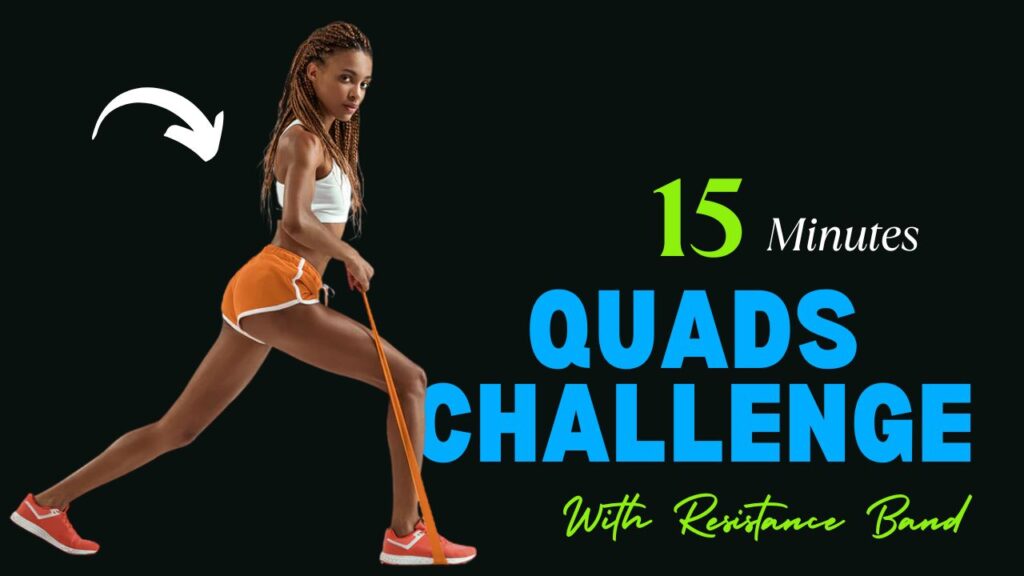
Table of Contents
Why Focus on Quads?
The quadriceps, or “quads,” are the large muscles on the front of your thighs. They are responsible for extending the knee and stabilizing your hips. Strong quads:
- Improve your posture and daily movement efficiency
- Reduce risk of knee injuries
- Enhance athletic performance in running, cycling, and jumping
- Give your legs a toned and lean appearance
Myth: Many people think squats alone can target quads. While squats are excellent, adding resistance bands increases activation and isolates the quads more effectively.
What Can Happen After 30 Days of 15-Minute Resistance Band Quads Workout
| Area | Expected Changes / Benefits |
|---|---|
| Quads | Noticeable toning and increased muscle definition; stronger front thigh muscles. |
| Leg Strength | Improved leg strength for daily activities, running, or climbing stairs. |
| Balance & Stability | Better hip and knee stability due to strengthened supporting muscles. |
| Endurance | Increased muscular endurance, allowing for longer or more intense leg workouts. |
| Posture | Slight improvement in posture as core and leg muscles become more engaged. |
| Joint Health | Reduced risk of knee and ankle injuries through stronger supporting muscles. |
| Calorie Burn | Enhanced metabolism and minor reduction in thigh fat with consistent diet and cardio. |
| Confidence | Improved confidence in performing functional movements and physical activities. |
Do’s and Don’ts for 15-Minute Resistance Band Quads Workout
| Do’s | Don’ts |
|---|---|
| Warm up for 5 minutes before starting the workout. | Skip the warm-up; it increases risk of injury. |
| Keep your core engaged during all exercises. | Let your back arch or collapse; it reduces effectiveness. |
| Maintain proper knee alignment with your toes. | Allow knees to cave inward during squats or lunges. |
| Use controlled, slow movements for maximum muscle engagement. | Perform fast, jerky movements that compromise form. |
| Gradually increase resistance or reps over time. | Start with too heavy a band or excessive repetitions. |
| Take short rests (20–30 seconds) to maintain intensity. | Rest too long and break workout flow. |
| Focus on mind-muscle connection, especially with isolation exercises. | Rush through exercises without focusing on the target muscle. |
| Stay consistent with the routine 3–4 times per week. | Skip sessions or perform inconsistently; results will be limited. |
Equipment Needed
- Medium to heavy resistance band
- Flat, stable surface
- Optional: mat for comfort
Resistance Band Quads Workouts To Do
1. Resistance Band Squats
Description: A classic move with an added resistance band to target quads more intensely. The band increases tension during the squat, making your muscles work harder throughout the movement.
How-to:
- Place the band just above your knees and stand with feet hip-width apart.
- Keep your chest up and core engaged.
- Slowly push your hips back and bend your knees to lower into a squat, keeping knees in line with toes.
- Pause for 1-2 seconds at the bottom.
- Push through your heels to return to the starting position.
Tips:
- Do not let knees collapse inward; the band helps maintain proper alignment.
- Keep your weight on your heels to target quads efficiently.
2. Resistance Band Front Lunges
Description: Lunges are perfect for unilateral leg strength, helping correct muscle imbalances and improve coordination. Adding a band increases the challenge for your quads.
How-to:
- Place the band around your thighs, just above the knees.
- Step forward with your right leg into a lunge, bending both knees to about 90 degrees.
- Keep your torso upright and core tight.
- Press through the heel of your front foot to return to standing.
- Repeat on the left leg.
Interesting Fact: Alternating lunges improve hip stability and activate smaller stabilizer muscles in your legs that are often neglected in traditional exercises.
3. Resistance Band Step-Ups
Description: Step-ups simulate climbing movements and are excellent for building quad strength while also engaging glutes.
How-to:
- Place a sturdy bench or step in front of you.
- Place the band above your knees.
- Step onto the bench with your right foot, pressing through the heel.
- Bring your left foot up to meet the right, then step back down.
- Alternate starting legs.
Tips:
- Maintain slow, controlled movements for maximum tension.
- Avoid locking your knees at the top to keep continuous muscle engagement.
4. Resistance Band Leg Extensions
Description: This isolation exercise specifically targets the quads, perfect for finishing your workout with a burn.
How-to:
- Sit on a chair or bench with the band around your ankles.
- Extend one leg out straight against the band’s resistance.
- Pause for a second at the top.
- Slowly lower back down and switch legs.
Pro Tip: Focus on squeezing your quads at the top for maximum contraction.
5. Resistance Band Side Step Squats
Description: This move challenges your quads and outer thighs while improving lateral movement and hip stability.
How-to:
- Place the band just above your knees and stand with feet shoulder-width apart.
- Slightly bend your knees into a mini squat.
- Step to the right, keeping tension on the band.
- Follow with the left foot, maintaining squat position.
- Take 8-10 steps in each direction.
Did you know? Lateral movements are often underutilized but are key for preventing knee injuries and enhancing overall leg strength.
6. Resistance Band Bulgarian Split Squats
Description: A powerful unilateral exercise that isolates each quad individually, improving balance and definition.
How-to:
- Stand a few feet in front of a bench or step.
- Place your left foot behind you on the bench.
- Place the band above your knees.
- Lower your body until the front thigh is parallel to the ground.
- Press through the front heel to return to standing.
- Switch legs after completing the set.
Tips: Keep your torso upright and core engaged throughout to maximize quad activation.
7. Resistance Band Wall Sits
Description: Wall sits with a resistance band are perfect for endurance and quad toning. The band prevents your knees from collapsing inward and intensifies the hold.
How-to:
- Place the band above your knees.
- Lean against a wall and slide down until thighs are parallel to the floor.
- Keep your knees aligned with toes and back pressed into the wall.
- Hold the position for 30-60 seconds.
Fun Fact: Isometric exercises like wall sits increase muscular endurance without joint stress, making them ideal for all fitness levels.
15-Minute Resistance Band Quad Workout Challenge
Here’s a simple table with exercise duration, sets, and rest periods to complete a full 15-minute quad-focused session.
| Exercise | Duration/Reps | Sets | Rest |
|---|---|---|---|
| Resistance Band Squats | 12-15 reps | 2 | 30 sec |
| Resistance Band Front Lunges | 10 reps each leg | 2 | 30 sec |
| Resistance Band Step-Ups | 12 reps each leg | 2 | 30 sec |
| Resistance Band Leg Extensions | 12 reps each leg | 2 | 20 sec |
| Resistance Band Side Step Squats | 8-10 steps each side | 2 | 30 sec |
| Resistance Band Bulgarian Split Squats | 10 reps each leg | 2 | 30 sec |
| Resistance Band Wall Sits | 30-45 sec | 2 | 20 sec |
Pro Tip: Perform this routine consecutively with minimal rest between exercises for a high-intensity, 15-minute session.
Extra Tips for Maximum Quad Definition
- Engage Core: Always tighten your core to stabilize your movements.
- Slow and Controlled Movements: Focus on form over speed to maximize muscle engagement.
- Breathe Properly: Exhale when pushing against resistance and inhale when returning to start.
- Consistency: Doing this routine 3-4 times a week will yield visible results in a few weeks.
Conclusion
This 15-minute resistance band quad workout is designed to give you lean, toned legs without spending hours in the gym.
By targeting your quads from multiple angles—through squats, lunges, step-ups, and isometric holds—you not only build strength and endurance but also improve balance, stability, and overall leg aesthetics.
Challenge Continuation Idea: Once you master the 15-minute session, you can progressively extend the workout by:
- Increasing resistance band tension or switching to a heavier band
- Adding an extra set to each exercise
- Performing the routine 4-5 times per week for continued strength and definition
- Mixing in complementary leg exercises like glute bridges or hamstring curls to create a full lower-body sculpting challenge
Remember, consistent effort combined with proper form is the key to sculpted, strong quads. Track your progress weekly, and gradually push yourself to add reps, sets, or resistance to keep the muscles challenged and growing.
Frequently Asked Questions (FAQs)
Do I need a heavy resistance band for this workout?
No, a medium resistance band is sufficient for beginners. You can gradually increase the resistance as your strength improves.
How often should I do this workout?
For best results, perform this 15-minute routine 3–4 times per week, allowing at least one rest day in between for recovery.
Can this workout help with knee pain?
When done with proper form, resistance band exercises can strengthen supporting muscles around the knee. Avoid overextending your knees and consult a healthcare professional if you have existing injuries.
How long until I see results?
With consistency, most people notice improved leg tone and quad strength within 3–4 weeks. Visible changes depend on nutrition, activity level, and workout consistency.
Can beginners do this workout?
Yes, beginners can start with lighter resistance bands and fewer reps, gradually increasing intensity as strength improves.
Do I need additional equipment besides the resistance band?
No additional equipment is required, but a mat or chair can make some exercises, like wall sits or leg extensions, more comfortable.
Can I combine this workout with other exercises?
Absolutely! You can integrate this routine with upper-body or cardio exercises to create a full-body workout plan.
Is this workout suitable for home or gym?
This workout is perfect for both home and gym settings. It requires minimal space and equipment.
Can resistance bands replace weightlifting for legs?
Resistance bands are excellent for toning and strengthening muscles, especially for home workouts, but combining them with free weights can provide additional strength benefits over time.
How can I make this workout more challenging?
Increase the band resistance, perform slower reps, add extra sets, or reduce rest time between exercises to intensify the challenge.





